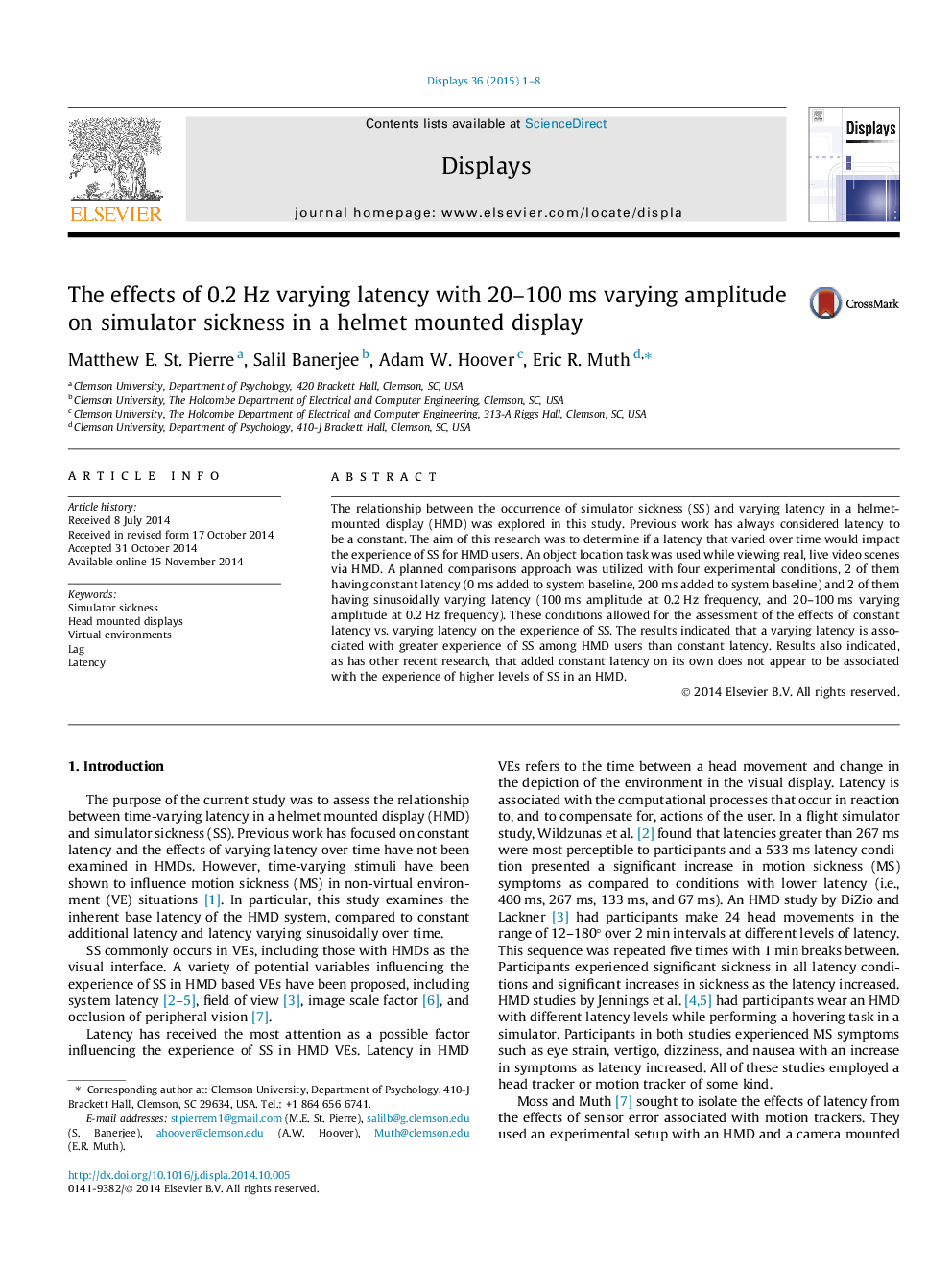| Article ID | Journal | Published Year | Pages | File Type |
|---|---|---|---|---|
| 538574 | Displays | 2015 | 8 Pages |
•Explored the relationship between simulator sickness and latency characteristics.•No support found for the relationship between raw latency and simulator sickness.•0.2 Hz frequency of latency is associated with higher levels of simulator sickness.•Varying amplitude of latency is associated with higher levels of simulator sickness.
The relationship between the occurrence of simulator sickness (SS) and varying latency in a helmet-mounted display (HMD) was explored in this study. Previous work has always considered latency to be a constant. The aim of this research was to determine if a latency that varied over time would impact the experience of SS for HMD users. An object location task was used while viewing real, live video scenes via HMD. A planned comparisons approach was utilized with four experimental conditions, 2 of them having constant latency (0 ms added to system baseline, 200 ms added to system baseline) and 2 of them having sinusoidally varying latency (100 ms amplitude at 0.2 Hz frequency, and 20–100 ms varying amplitude at 0.2 Hz frequency). These conditions allowed for the assessment of the effects of constant latency vs. varying latency on the experience of SS. The results indicated that a varying latency is associated with greater experience of SS among HMD users than constant latency. Results also indicated, as has other recent research, that added constant latency on its own does not appear to be associated with the experience of higher levels of SS in an HMD.
